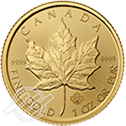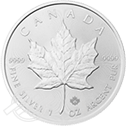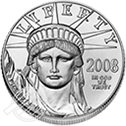Could Another Round of QE be in the Cards?
Markets have been wrestling with numerous issues in recent months. The ongoing war on trade, rising interest rates, Brexit, the continuing government shutdown and other geopolitical concerns to name a few.
During that time, stock markets have come under pressure and recently flirted with bear market territory. A sharp rise in volatility didn’t help matters either, and investors have been left wondering if a market top has been reached.
Much has been made of the mixed messages from the Fed. Not long ago, Fed chief Jerome Powell suggested that rates had a way to go before finding a ‘neutral” level. Then the central bank implied that rates might be closer to neutral than previously thought. The latest release of the FOMC meeting minutes had a very different tone, and now the Fed appears to be content to hold steady-for the next few months anyway. The Fed does, however, still have two more hikes penciled in for this year, although those hikes may not take place until later in the year if at all.
Some traders have suggested there is a good possibility that the central bank could start cutting rates again this year. Although this idea may seem a bit far-fetched, it is entirely plausible and would likely depend on several key factors. If the trade war continues…If the shutdown drags on…if the effects of tax cuts begin to rally fade…These are all issues that could force the Fed’s hand.
The Fed has a little problem however: If the global economy does slow to the point that intervention is necessary, the central bank is limited in what it may be able to accomplish through interest rates alone. As the Great Recession got going, the Fed was able to quickly lower the key rate from 5.25% all the way to 0% in a short period of time. With current rates at less than half of those previous levels, the Fed may not have that luxury.
If the economy begins to sputter sharply, the Fed could look to a fresh round of QE in order to keep borrowing costs down and to spur growth. If the Fed were to decide to crank up the printing presses once again, it could have a significant impact on the dollar.
The simple laws of supply and demand would dictate that more dollars flooding the market could take the currency-unit value lower. As the dollar sinks, so does the amount of goods and services that each dollar can buy.
In other words, your purchasing power would decline.
Although no one knows whether the Fed will end up having to cut rates this year or even resort to QE, the issue is not really a question of “if” but “when.”
The currency cycle is arguably getting very long in the tooth, and the next recession could be closer than anticipated. Whether that recession occurs this year, next year, or even in the next few years, the Fed could be left with little choice but to print money and weaken the dollar.
The potential for another easing period is yet another reason that now may be the ideal time to consider allocations in asset classes that could potentially outperform under such a scenario. When it comes to hedging against recession and a weaker dollar, there may be no asset superior to gold bullion.
Adding physical gold has never been easier and current price levels may represent a significant long-term bargain. All you have to do is pick up the phone and speak with an Advantage Gold account executive. Our associates are here to answer any questions you may have and can even show you how easy it is to build a significant allocation in this key asset class using an IRA account.
Don’t wait for the next major recession to take stock markets drastically lower and for a weaker dollar to erode the value of your portfolio. Explore your options for gold ownership today. Call Advantage Gold at 1-800-341-8584 to get started now.
Tags: advantage gold, brexit, fedm, fomc, gold, powell, quantitative easing, shutdown


